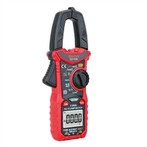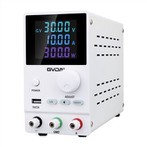Biological Applications - Laser Confocal Microscope
1. Applicable to cell biology, cell physiology, neurobiology and neurophysiology and almost all other fields involving cell research.
2. Non-destructive real-time observation and analysis of living cells, and combined morphological and functional studies. Non-invasive, reliable and reproducible cell detection; data images can be output in time or stored for a long time.
3. Continuous tomography of live cells and tissues or cellular tissue sections, can obtain a fine single cell or a group of cells or the observed local tissue structure at all levels (two-dimensional and three-dimensional) (including cell-specific structures - such as the cytoskeleton, chromosomes, organelles and cell membrane system, the sample of the deeper structure) and the complete three-dimensional image (such as the analysis of changes over time), i.e., four-dimensional image, but also to analyse the changes over time. (e.g., analysing changes over time, i.e., four-dimensional images, but also changes over fluorescence wavelengths, which allows for more multi-dimensional images). Locate the spatial position of tissue cells and other structures of the object to be observed for real-time dynamic observation, analysis and recording; analyse the qualitative, quantitative, timing and positioning distribution.
4. Fluorescent labelling probe labelling of live cells or sliced specimens for observation of cellular biological substances, membrane labelling, cell tracing, substances, reactions, receptors or ligands, nucleic acids, etc.; simultaneous multiple substance labelling and simultaneous observation can be carried out on the same sample.
5. Intracellular ion fluorescence labelling, single or multiple labelling, detection of intracellular such as pH and sodium, potassium, calcium, magnesium and other ions concentration ratio measurement and its dynamic changes;
6. Measurement of cell membrane potential, detection of free radicals, etc;
7. Perform positioning fluorescence bleaching recovery experiments, combined with fluorescence loss in fluorescence bleaching experiments, to study intercellular communication and other relevant intracellular substances (molecules, etc.) movement; in the time-scanning experiments and photo-bleaching (light quenching) experiments, can be simultaneous simultaneous output and conversion of data and images for each channel. Perform fluorescence resonance energy transfer experiments to study the movement of molecules and ions within the cell through the change of fluorescence wavelength and interaction.
8. It is very accurate (spatial positioning, quantification, fixed wavelength, fixed time), sensitive, fast and able to complete the separation and observation and analysis of various wavelength images of multiple fluorescent labels of cell tissues at the same time (even multiple fluorescents whose emission wavelengths are very close to each other, e.g., the difference of only a few nm), as well as the on-line measurement and analysis function of co-localisation of multiple fluorescent labels.






